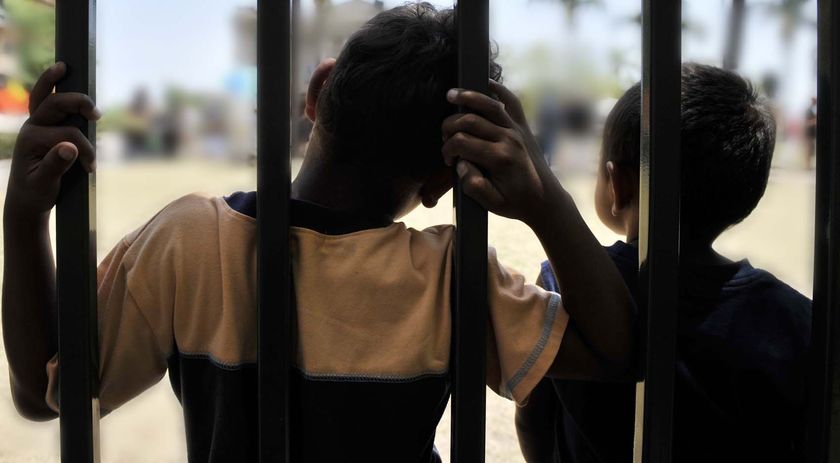
 Youth Incarceration in Australia
Youth Incarceration in Australia
Here in the UK, some would say we are relatively lucky. Around 3% of the UK population is made up of peoples of African and Caribbean descent, with about 14% of those in the UK prison system arising from this part of the population. In contrast, in Australia, 2.5% of the total population is made up of 'First nation' peoples, though the incarceration rate is double that of the UK's at a staggering 28%.
Lo and behold, The United States of America takes the biscuit in this respect. Afro-Americans make up a whopping 37% of those jailed by the U.S penal system. Combine this with the increasing number of revelations about the U.S Prison Complex and statistics on US police shootings over the last few years and it is of no wonder that the #blacklivesmatter movement grows in strength and support everyday.
The SourceFed video below highlights recent trends in U.S police shootings.
Now back to the main issue of this article.
The recent investigative documentary aired by Australian network ABC's Four Corners named 'Australia's Shame' detailed the inner workings of the Don Dale Youth Detention Center in Alice Springs and brought to light some of the most shameful human rights abuses occurring in Australia today. It also helped to highlight the disproportionate rates of Aboriginals being jailed in the Australian prison system, in particular the youth.
Have a peek at the short but absolutely shocking trailer below... Memories of Guantanamo perhaps?
It has been well noted by legal professionals across Australia that these abuses constitute breaches of not just the Northern Territory Youth Justice Act, but also contravene the UN Convention on the Rights of a Child and the UN Convention against Torture. However, this is just the tip of the iceberg with regard to a criminal justice system that subjects Aboriginal children to institutionalised child abuse across Australia on a daily basis.
According to the 2015 Northern Territory Youth Detention System Report, 97% of youth detainees are Aboriginal.
It's been 25 years since the only Royal Commission into Aboriginal Deaths in Custody. The commission recognised that in every one of the 99 deaths investigated, ‘Aboriginality played a significant and in most cases dominant role in their being in custody and dying in custody’. On the evidence the commission recommended ‘that there is an urgent need for governments and Aboriginal organisations to negotiate together to devise strategies designed to reduce the rate at which Aboriginal juveniles are involved in the welfare and criminal justice systems’.
Since the Commission's report was published a quarter of a century ago, the rate of imprisonment of Aboriginal people has doubled and almost 400 Aboriginal people have died in custody. Section 4 of the NT Youth Justice Act decrees that custody is absolutely the last resort. Very sadly, it is most unlikely that those in custody are there for their own saftey and as last resort. Across Australia, young people who are released from detention are three times more likely to end up back in custody within twelve months than those sentenced to community based supervision (Australian Institute of Health and Welfare 2015). Locking people up does not solve the problems that lead people to exhibit ‘criminal’ behaviour and certainly does not make our communities safer.
An end to child imprisonment and the raising of the age of criminal responsibility to 18 would be a good start. Furthermore, the just reinvestment in communities with the funding directed into community-based youth, therapeutic and rehabilitation services would be of great social benefit.
In Australia specifically, changes to the Youth Justice Act in the NT and the recent youth Justice Amendment Bill 2016 which would ensure the lawfulness of the use of ‘mechanical devices’ and other ‘approved restraints’ on detained children must be incorporated. It is unacceptable that when detainees are ‘at risk’, the only restriction on officers using force is that the ‘use and extent of force’ be ‘necessary and convenient’. This may be much fairer and much more reasonable when applied to adults, but certainly not to children who require a much higher standard of care.
Furthermore, all of those individuals involved in the abuses, including the politicians who knew about the abuse and did nothing, must be held accountable. No child should ever be sentenced to prison where they are subjected to the most abject abuse.
Community-based therapeutic intervention is essential for social wellness and equality and is a far more effective long-term solution than imprisonment.
Keep your eyes peeled people.
Many thanks to Ms. Olivia Henry, who is on the ground in Alice Springs campaigning for Aboriginal Rights and #shutyouthprisons.
You can watch ABC's shocking Four Corners expose on the Don Dale Youth Detention Center in its entirety below.
@PhillyTea
